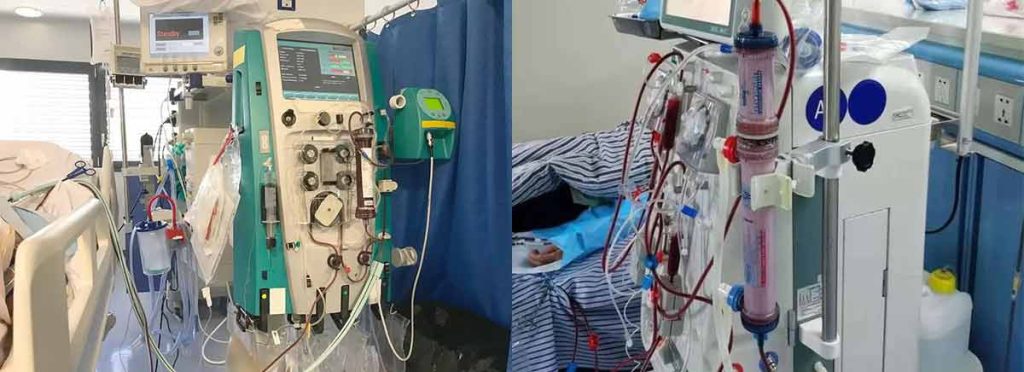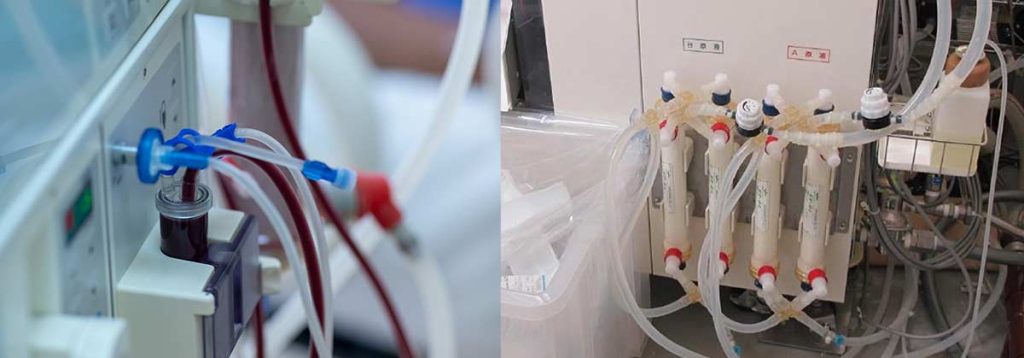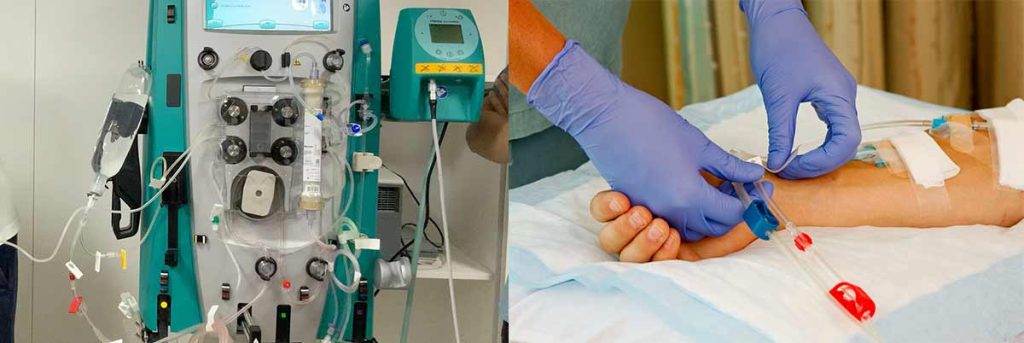

Dialysis water treatment system plays a critical role in hemodialysis by producing water that meets rigorous medical standards. In 2025, advancements in technology have significantly improved their safety, efficiency, and reliability. The system now utilizes cutting-edge methods such as reverse osmosis, ultrafiltration, and deionization to achieve unparalleled purification levels. For instance, removal efficiencies for key contaminants like calcium, magnesium, and aluminum exceed 78%, ensuring safer treatment for dialysis patients. Additionally, regulatory support in regions like North America and Europe has driven the adoption of two-stage systems, which deliver superior water quality and enhance patient outcomes.
Key Takeaways
- Dialysis water systems keep patients safe by cleaning water properly.
- Taking care of dialysis filters and softeners helps the system work well.
- Special tools like reverse osmosis clean water by removing bad stuff.
- Monitors check water quality instantly to fix problems fast.
- Following rules from groups like AAMI keeps patients healthy during dialysis.
Components of a Dialysis Water Treatment System
Pre-treatment Units
Pre-treatment units form the first line of defense in a dialysis water treatment system. These units remove large particles, sediments, and other impurities that could damage downstream components. Key elements of pre-treatment include sediment filters, carbon filters, and water softeners. Sediment filters trap particles like sand and rust, while carbon filters eliminate chlorine and chloramine, which can harm reverse osmosis membranes. Water softeners reduce calcium and magnesium levels, preventing scale buildup.
Tip: Regular maintenance of pre-treatment units ensures optimal performance and extends the lifespan of the entire system.
A study of dialysis water treatment system revealed that 100% of units met infrastructure requirements, highlighting the importance of robust pre-treatment mechanisms. However, 6.7% of systems lacked automatic nitrate filters, which are critical for removing nitrates that could compromise water quality.
Reverse Osmosis Systems
Reverse osmosis (RO) systems are the backbone of water purification in dialysis. These systems use semi-permeable membranes to remove dissolved salts, organic compounds, and microorganisms. RO systems in modern dialysis setups are designed for high throughput while minimizing water waste. Facilities aim for recovery rates above 75%, balancing resource utilization with waste management.
| Measure | Description |
|---|---|
| Operational Efficiency | Facilities prefer RO systems designed for high throughput while minimizing waste production. |
| Recovery Rates | Ideally should remain above 75%, indicating a good balance between waste management and resource utilization. |
| Compliance | Systems must provide documentation proving adherence to local and national health regulations. |
Despite their efficiency, not all systems are equipped with advanced RO membranes. For example, only 66.7% of systems included a two-membrane RO device, while 80% had a three-membrane setup. These variations can impact the overall purification efficiency.
Deionization and UV Disinfection
Deionization (DI) and ultraviolet (UV) disinfection are critical for maintaining water purity. DI systems remove ionic contaminants by exchanging ions in the water with hydrogen and hydroxyl ions. Continuous monitoring of DI systems is essential, with resistivity measurements recorded twice daily to ensure water quality remains above the required threshold.
UV disinfection, on the other hand, controls bacterial growth by emitting a specific wavelength that disrupts bacterial DNA. Modern UV systems include calibrated intensity meters and require regular maintenance, such as lamp replacement and quartz sleeve cleaning, to prevent biofilm formation. These measures ensure the reliability of UV disinfection in maintaining water purity.
Note: Reliable service from DI system dealers is crucial. Timely maintenance and deliveries prevent costly shutdowns due to a lack of deionized water.
The integration of DI and UV components enhances the overall effectiveness of a dialysis water treatment system, ensuring that water meets stringent medical standards.
Storage and Distribution Mechanisms
Storage and distribution mechanisms play a pivotal role in ensuring the purified water remains safe and accessible for dialysis procedures. These systems are designed to maintain water quality while delivering it efficiently to dialysis machines.
Storage Tanks
Storage tanks act as reservoirs for purified water. They are typically constructed from materials like stainless steel or high-grade plastic to prevent contamination. Modern tanks include features such as:
- Sealed Lids: Prevent airborne contaminants from entering the tank.
- Sloped Bottoms: Facilitate complete drainage, reducing the risk of bacterial growth.
- Vent Filters: Allow air exchange while blocking dust and microorganisms.
Tip: Regular cleaning and disinfection of storage tanks are essential to prevent biofilm formation and maintain water purity.
Distribution Systems

Distribution systems transport purified water from storage tanks to dialysis machines. These systems use specialized piping, often made of medical-grade materials like polyvinylidene fluoride (PVDF) or stainless steel, to prevent leaching of contaminants. Key components include:
- Circulation Pumps: Ensure continuous water flow, reducing stagnation and microbial growth.
- Loop Design: Closed-loop systems are preferred as they minimize dead ends where bacteria can accumulate.
- Pressure Monitors: Maintain consistent water pressure, ensuring reliable delivery to all machines.
Advanced Monitoring and Automation
In 2025, storage and distribution mechanisms integrate advanced monitoring technologies. Sensors track parameters like water temperature, pressure, and microbial levels in real time. Automated alerts notify technicians of any deviations, allowing for immediate corrective actions. These innovations enhance the reliability of the dialysis water treatment system.
Note: Facilities should schedule routine inspections of distribution systems to identify and address potential issues before they impact water quality.
Challenges and Solutions
Despite advancements, challenges like biofilm formation and equipment wear persist. Facilities address these issues by implementing rigorous maintenance protocols and using antimicrobial coatings on pipes. Additionally, staff training ensures proper handling and operation of storage and distribution systems.
The integration of robust storage and distribution mechanisms ensures that purified water remains uncontaminated and readily available for dialysis, safeguarding patient health.
Water Purification Process in Dialysis
Filtration and Sediment Removal
Filtration and sediment removal serve as the initial steps in the dialysis water purification process. These steps eliminate large particles, such as sand, rust, and other debris, that could damage downstream components or compromise water quality. Advanced filtration systems in 2025 achieve ultrapure water standards, exceeding both EPA and AAMI guidelines. Reverse osmosis systems, for instance, can remove up to 99% of contaminants, ensuring water meets stringent microbiological testing requirements of less than 0.25 Endotoxin Units and fewer than 10 Colony Forming Units per milliliter.
Tip: Regularly replacing filters and monitoring sediment levels can prevent clogging and maintain system efficiency.
Chemical Treatment for Chlorine and Chloramine
Chlorine and chloramine are common disinfectants in municipal water supplies but pose significant risks to dialysis patients. These chemicals can damage red blood cells and harm reverse osmosis membranes if not removed effectively. Dialysis water treatment systems employ activated carbon filtration to break down chloramines into harmless chlorides. This process requires a minimum empty bed contact time (EBCT) of 10 minutes, as mandated by AAMI standards, to ensure complete removal.
| Evidence Type | Description |
|---|---|
| Activated Carbon Filtration | Acts as a catalyst for chloramine breakdown, requiring at least 10 minutes. |
| Catalytic Activity | Enhanced activated carbons improve removal efficiency, especially at high pH. |
Ultraviolet (UV) radiation has also emerged as a nonchemical alternative for dechlorination. It effectively breaks down chlorine and chloramines into simpler by-products, enhancing safety and reducing chemical dependency.
Reverse Osmosis and Deionization
Reverse osmosis (RO) and deionization (DI) are critical for achieving the high purity levels required in dialysis. RO systems use semi-permeable membranes to remove dissolved salts, organic compounds, and microorganisms. Double-pass RO systems, which are increasingly common in 2025, further enhance water quality by reducing colony-forming units to as low as 2.8 per milliliter when paired with advanced materials like cross-linked polyethylene.
| Measurement | Before Treatment (ppm) | After Treatment (ppm) |
|---|---|---|
| Salts | 0.0358 | 0.0225 |
Deionization complements RO by removing ionic contaminants through ion exchange resins. This process ensures water resistivity remains within acceptable limits, safeguarding patient health. Together, RO and DI form a robust purification framework that meets federal regulations for bacteria and endotoxin levels, ensuring the safety and effectiveness of dialysis treatments.
Disinfection and Quality Assurance
Disinfection and quality assurance are critical components of a dialysis water treatment system. These processes ensure that water used in dialysis meets stringent safety standards, protecting patients from harmful contaminants and infections.
Modern disinfection protocols rely on advanced methods to maintain microbiological purity. Facilities often use daily overnight heated disinfection, which effectively eliminates bacteria and biofilm within the system. Steel circuits have become a preferred material for piping due to their resistance to microbial growth. Over the past 20 years, these advancements have significantly improved the microbiological quality of dialysis water, reducing contamination risks.
Regular sampling and monitoring play a vital role in quality assurance. The Association for the Advancement of Medical Instrumentation (AAMI) has established standards that address water quality requirements. Federal regulations also set strict limits on contaminants in dialysis water and solutions. Historical outbreaks of waterborne infections, such as those caused by Burkholderia cepacia and Pseudomonas aeruginosa, highlight the importance of adhering to these standards.
| Study Period | DW Plants Monitored | Negative Results (%) | Contaminants Detected | Disinfection Methods Used |
|---|---|---|---|---|
| 24 months | 9 | 78% | Burkholderia cepacia, Pseudomonas aeruginosa | Peracetic acid, Sodium hypochlorite |
Facilities implement various disinfection methods, including chemical agents like peracetic acid and sodium hypochlorite. These agents effectively neutralize microbial contaminants, ensuring water remains safe for dialysis. Automated systems now monitor disinfection cycles, providing real-time data on water quality and alerting technicians to any deviations.
Quality assurance measures extend beyond disinfection. Routine inspections, staff training, and adherence to AAMI guidelines ensure that systems operate efficiently. By combining advanced disinfection techniques with rigorous quality assurance protocols, dialysis water treatment system in 2025 continues to safeguard patient health.
Ensuring Patient Safety and System Efficiency
Adherence to Medical Standards
Dialysis water treatment system plays a vital role in ensuring patient safety during hemodialysis. The system is designed to meet stringent quality standards, which help prevent contamination and reduce the risk of infections or adverse reactions. Organizations like the Association for the Advancement of Medical Instrumentation (AAMI) set strict guidelines for water quality, including limits on endotoxins, microbial content, and chemical impurities. Facilities must comply with these standards to protect patients.
Regular water quality testing is a cornerstone of compliance. Dialysis facilities routinely measure parameters such as pH, conductivity, and endotoxin levels. These tests ensure that the water used in treatment remains safe and effective. Advanced purification technologies, including reverse osmosis and deionization, are integrated into modern systems to meet or exceed these quality criteria. By adhering to these standards, facilities safeguard patient health and maintain the efficacy of hemodialysis procedures.
Tip: Routine staff training on compliance protocols ensures that facilities consistently meet legal and medical requirements.
Real-time Contaminant Detection
In 2025, real-time contaminant detection has become a critical feature of dialysis water treatment system. Advanced sensors continuously monitor water quality, detecting impurities such as bacteria, endotoxins, and chemical residues. These sensors provide instant feedback, allowing technicians to address issues before they compromise patient safety.
Automated alerts enhance the efficiency of these systems. For example, if microbial levels exceed acceptable thresholds, the system immediately notifies staff to take corrective action. This proactive approach minimizes downtime and ensures uninterrupted access to safe, purified water. Additionally, real-time monitoring reduces the reliance on manual testing, streamlining operations and improving accuracy.
Note: Facilities should regularly calibrate sensors to maintain the reliability of real-time detection systems.
By combining adherence to medical standards with real-time monitoring, dialysis water treatment system in 2025 achieve unparalleled levels of safety and efficiency. These advancements protect patients while optimizing system performance.

Conclusion
Dialysis water treatment system remains indispensable for hemodialysis, ensuring safe care for patients with kidney failure. In 2025, technological advancements have significantly enhanced their reliability and efficiency. Innovations like improved filtration methods and hemodiafiltration (HDF) technology have transformed patient outcomes. HDF, for instance, increases convective clearance and reduces hospitalizations, as studies presented during Kidney Week 2024 revealed. These systems now deliver better mortality rates, improved anemia management, and enhanced quality of life. By adhering to rigorous standards and leveraging cutting-edge technologies, dialysis water treatment system continues to safeguard patient health and optimize treatment outcomes.
